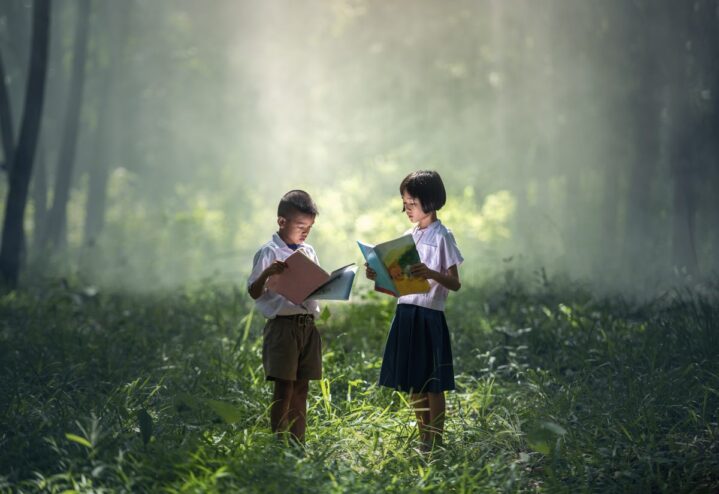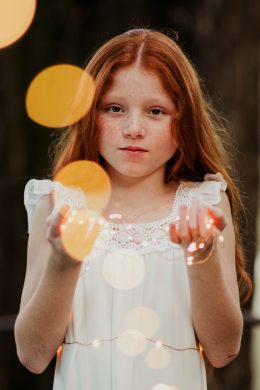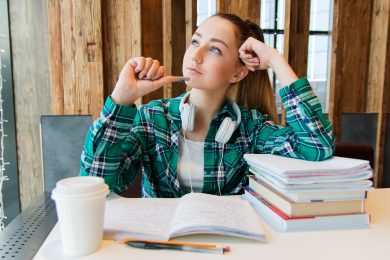
Mindfulness in schools
When we talk about mindfulness in schools there’s a lot of misconceptions about what it is, and also about what it isn’t. Mindfulness is known to have fundamental benefits for health, it makes us feel calmer and more relaxed. Research has shown that mindfulness changes brain structure. It reduces the size of the amygdala, which is a person’s emotional control centre, it controls reactions and impulsive emotional action. Recent brain research published by MIT study shows the same benefits for brain structuring for children (2019). The Mindfulness of Schools project in the UK has done the most rigorous research on brain health and schools. The MYRIAD Project through Oxford University has conducted a study to establish whether mindfulness training in schools is effective to improve resiliency and mental health outcomes in young people. (http://myriadproject.org/myriad-project/the-myriad-project-in-schools/).
Schools recognise that students enjoy doing it, they report having emotional benefit – they feel more relaxed, they feel less stress, they feel less anxiety, they can notice their thinking more, they may even report being able to self-manage and self-regulate. For example, “I noticed I was getting angry, and I didn’t hit him” “I can make a different choice”. While these benefits are clear, the socio-emotional aspects has very strong evidence, most schools, as centres of learning, want to understand the link of mindfulness with learning.
Pay Attention, Pay Attention, Pay Attention
Is there evidence that mindfulness improves student learning? Now the evidence shows that when kids are self-regulated and mindfulness is shown to improve empathy, then as students they are more engaged, they can focus their attention. Part of mindfulness is the ability to focus one’s attention and concentration, many students have shared that “before my teacher was yelling at me to pay attention, pay attention, pay attention”. Often we don’t teach kids how to pay attention. We may yell at them to be quiet, or ask them to focus, or concentrate. But we don’t usually teach them how to focus. Mindfulness teaches intentional awareness, which involves concentration and focus, and develops other skills of learning such as resilience and noticing mind wandering. It also allows one to develop a practice of being empathetic with yourself when learning something new. It helps a student to imagine a possibility of a different way to talk to themselves, so that instead of saying, “I don’t get it” they can say “I don’t get it yet”. This dovetails with Angela Duckworth’s work on Grit and Mindsets.
How is mindfulness linked to resilience? Can you say more about this?
Some of the skills of mindfulness is about being aware. Resilience involves: emotional awareness, impulse control, flexible thinking and empathy. These all take awareness, a mindfulness. It’s not enough to try to teach kids how to pay attention. It’s the emotional piece that helps you self regulate. It helps a student to know both what they are thinking and tune into what they are feeling. And there’s a gap between that and asking oneself “what action do I want to take?”
 How does mindfulness fit into a school day?
How does mindfulness fit into a school day?
One of the things that we know, is that it is best to start grass roots. Get the people who are interested in being trained to teach students, that would include first being mindful themselves and having to practice, having a direct experience of mindfulness. It’s like teaching swimming. A school wouldn’t send a social studies teacher to the pool with a life preserver and a whistle and say to kids “ok, jump in the water”. We would expect roper training, even if it’s a PE teacher who will teach swimming, we would expect that they themselves would know how to swim. They can read all the manuals that they want, they can watch online videos on how to swim, but unless they can actually swim, we wouldn’t put the kids in the water with them. It’s the same thing for mindfulness.
In Dan Segal’s book, Mindfulness based Cognitive Therapy, the research showed that if people didn’t have a personal practice and are not trained to teach others, the research will not show any effects on people who are learning from them. But when the teachers are trained, and have a regular practice, and are taught how to teach, then the research shows that there are benefits to mindfulness.
What does mindfulness look like in your classroom?
In my health and wellness class the first five-ten minutes are mindfulness. At the beginning of the year I introduce it, explain what it will look like. We have a common agreement. Basically, the common agreement is that a student will be respectful to other students trying to do the practice. The minimum expectation is that a student is quiet and not distracting others. And then it’s invitational. This is a difference between mindfulness and other subjects that we teach in schools. The kids get comfortable, there is something about the body posture, in terms of the vagus nerve being stimulated. The kids like that, they like learning about the brain, the nervous system, and the difference posture makes in the connections. They understand it’s not just a teacher asking them to sit up and be quiet. So then they get comfortable, we start very slowly. I have a practice of mindfulness of sound. I have a chime that has a very long sound, I ask the students to put up their hands when they can no longer hear the sound. I hit the chime once and then they listen. They listen, listen, listen until the end. When they feel they can no longer hear the sound, they raise their hands. We might do that three times, and that’s our mindfulness for the day. Over time, as they get comfortable with it, it’s amazing. The students ask for it. They get settled in, they do a mindful body check, with feet on the floor, body in the chair, leaning back, and we start. In the class, I can feel their nervous systems unwind. They drop into it. The other feeling that I see is that they are hungry for this. They sit and they just need a moment to be grounded before they start learning. I get students to write about their mindfulness experience and their reflections are positive.
What does it look like in Elementary/Primary school?
The assumption for younger students is because they are dis-regulated that they cannot learn mindfulness. I have worked with as young as Pre-K classroom and the students they get it, they are almost better at it than the middle and high school students. They are used to be more embodied about feelings, physical sensations and their bodies. The practice in Elementary involved hand on the heart and the belly, and allow them to feel a physical sensation of breathing. We might do that for five to ten breaths. We might do a “heart-full-ness” exercise where we send good thoughts. For example, anchor with the breath, imagine anyone that they love who is alive and well, could be a family member or a pet. We imagine them happy, notice how they are feeling. Tap into that physical feeling of emotion. And then sending them a kind thought. The important aspect after each exercise we do an inquiry, a reflection. We ask them “what did you feel”? The responses are telling: “I felt warm inside”, “I felt happy”, “I felt kind”. In that case mindfulness is a practice of evoking and noticing emotions, being aware of them.
How about High School?
It’s not that much different at the higher grades, it just may be a bit longer session. For example, sometimes I will go into an advisory and do a series with them. Other times, I will go in during heightened stress periods, such as exams, they may also do it. What we are trying to do is move from so much thinking and doing, to being and sensing (the felt sense). For example, l have done breathing sticks with high school students. These are fuzzy sticks, pipe cleaners, and little beads. They will inhale and move the bead from one side of the cleaner to the other, then on exhalation they will move it back. They can feel the breath, the fuzziness, it directs one’s attention to the tactile body. It can also be an emotional feeling or a heart sense, this practice moves them away from thinking and doing into being.
 The awareness of thinking is critical at this age. Many children at this age, as the prefrontal cortex develops, believe that everything that they are thinking is real. It’s just a thought. In a way, just as the stomach produces stomach acid to digest, the brain produces thinking. Some of the thoughts may be true, some may not be. Students don’t often discern that fact, or know how the brain functions. Part of the role of mindfulness is noticing thinking, an awareness of how the mind works. And then introduce them to the idea that they are able to choose. They can ask themselves, is that thought really true? If a child tells themselves “I am so ugly” “Everyone hates me” “I have no friends”. Can we notice these as thinking? Can we recognise that “I am just having a thought?” For some kids, they will have the thought and look for evidence and realise, it’s not true. For others, they will have the thought and take it as true fact, and it will keep repeating, and it becomes more harmful.
The awareness of thinking is critical at this age. Many children at this age, as the prefrontal cortex develops, believe that everything that they are thinking is real. It’s just a thought. In a way, just as the stomach produces stomach acid to digest, the brain produces thinking. Some of the thoughts may be true, some may not be. Students don’t often discern that fact, or know how the brain functions. Part of the role of mindfulness is noticing thinking, an awareness of how the mind works. And then introduce them to the idea that they are able to choose. They can ask themselves, is that thought really true? If a child tells themselves “I am so ugly” “Everyone hates me” “I have no friends”. Can we notice these as thinking? Can we recognise that “I am just having a thought?” For some kids, they will have the thought and look for evidence and realise, it’s not true. For others, they will have the thought and take it as true fact, and it will keep repeating, and it becomes more harmful.
The hot cross bun approach, as taught in the mindfulness sessions for parents on the .B foundations course, helps develop a visual representation that separates thinking from feeling. As adults we forget about this, the deep body connection has been conditioned out of us. Our thinking is not the only way that we know. It’s about reconnecting with our own bodies, with our own felt sense, with our own intuition as all supporting knowing, not just thinking. In high school, as the brains are developing, it’s important for students to be able to focus, to concentrate, to be aware of their feelings and their thinking. These are life long skills
What is mindfulness not?
Mindfulness is a secular practice based in the field of psychology and health, it is not a religion and it’s a really attuning to the body. Do I know when I am sitting? Sit and know that you are sitting. Breath and know that you are breathing. It takes the mind and thoughts and breath into the now with a complete prescience and awareness of what is happening. What am I thinking, when I am thinking it? What am I feeling when I am feeling it?
What are some of the challenges to have mindfulness in schools?
It can be part of curriculum, it comes into elementary classrooms. The challenge for schools is how to ensure from Pre-K to 12, or in the average international school 3-4 year time span, that every child will have some exposure to mindfulness. Is an 8 week course, are students exposed to it? Are they given a decent opportunity to explore the practice? Enough to make brain changes? It can’t be a one off, it needs to be for a certain length of time.The challenge for schools is how to ensure that it is happening, that it happens for a certain length of time, and who is going to teach it in a way that will make a difference.



